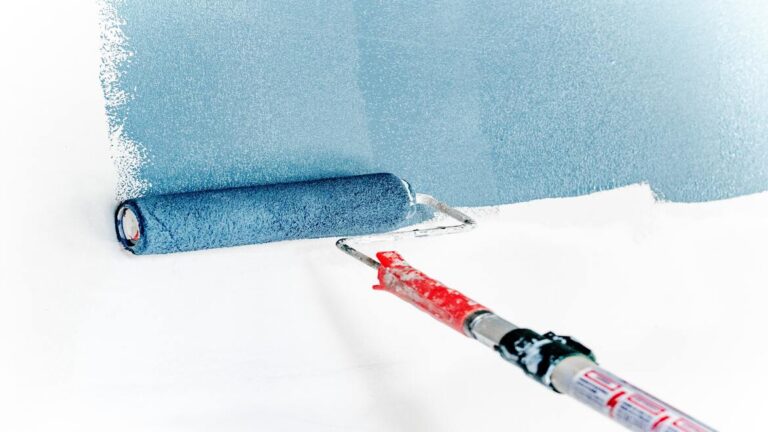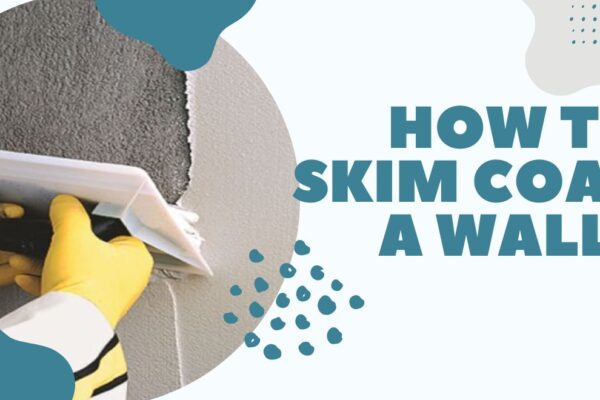Are you going to paint a door or a wall on the outside or use some leftover paint from the living room or basement on some patio furniture? Are you curious whether interior paint can be used outside? It’s not advisable. Interior paint isn’t designed to withstand rain, snow, wind, UV, mildew, or temperature extremes.
Interior Paint
Pets, furniture, vacuums, and everything else that rubs against it frequently won’t harm interior paint, which is made to withstand these things. When it gets dirty, it can be wiped down and scrubbed. It also resists fading and yellowing.
In contrast to oil-based products, it typically has a water-based composition (also known as latex) and is composed of four fundamental substances: pigments, solvents, additives, and resins.
Interior paint utilizes more rigid resins than exterior paint, which facilitates easier cleanup and stain resistance.
Additionally, it has particular additives that speed up drying and evenly distribute the pigment.
Interior paint does not contain weather-proofing additives, in contrast to exterior paint.
Exterior Paint
Since oil-based paints offered a more durable finish in the past, the majority of exterior paints were oil-based. Technology advancements, however, have caused a change in the trend. Nowadays, acrylic resins are used to help bind exterior paint that is water-based in most cases.
Exterior paint has more additives to withstand the elements outside, which is the main distinction between interior and exterior paint.
Exterior paint needs to be able to withstand moisture from rain, snow, and wind. It must be able to withstand both sudden drops in temperature and gradual rises in them, and it must keep its color even after spending hours in the sun.
Resins that are softer and more flexible are used in exterior paint to make it more resistant to mildew, peeling, and chipping. It can shrink thanks to its flexibility when moisture is present.

Differences Between Interior Paint And Exterior Paint
In recent years, there has been a significant change in the chemistry underlying both interior and exterior paints. For use in a particular space, paints are made with that space in mind.
Not just any paint can be thrown on any surface. Modern paints are intended to produce a more dependable surface in particular settings. We don’t want you to waste money on paints that, despite being of a high caliber, are inappropriate for the requirements of your project.
Paints can be broadly categorized into two categories: oil-based and water-based paints (which includes vinyl soft sheen paints). If there were two distinct types of paint, one for interior use and the other for exterior use, things would be straightforward. Both kinds, though, come in compositions that work with both surfaces.
Oil-based paints are better at resisting dirt when it comes to exterior paints. On exterior surfaces, water-based latex paint is also frequently used. This is because water-based latex paint has a number of advantages in addition to being just as durable.
Can You Use Interior Paint Outside
The quick response is no. Paints for interior spaces shouldn’t be used outside because they don’t contain the additives needed to withstand the weather.
In addition to concerns about durability, interior paint is thinner than exterior paint and does not adhere as well to exterior surfaces, necessitating the application of additional coats to achieve the same coverage. Even with several coats, it won’t appear as uniform as it would with exterior paint.
Finally, since interior paint is not intended to dry outdoors, it takes longer to dry.
Even if you are successful in getting good coverage with interior paint, the work is not finished. When interior paint is applied to outdoor surfaces, you’ll eventually notice that it starts to fade and crack. This necessitates more frequent touch-ups.
Can Exterior Paint Be Used Inside
No, you shouldn’t ever use exterior paint inside. It is extremely dangerous to use exterior paint inside your home due to its chemical composition.
When you use exterior paint indoors, you expose yourself to chemical fumes, In a confined area, VOCs, mildewcides, and other potentially dangerous ingredients.
These substances linger in the air in inadequately ventilated spaces, irritating your skin and respiratory system.
VOCs are still released from the paint even after it has dried. In fact, if the weather is humid, which can aggravate allergies, you might be able to smell the mildewcides and fungicides in the paint weeks or months after they were applied.
Interior paint, on the other hand, contains the least amount of VOCs. There are interior paints available that contain absolutely no VOCs. At room temperature, the VOCs should typically vaporize and can be ventilated through open windows.
There are some exceptions to the rule. Although it shouldn’t be your first option, exterior paint can be used in sheds, detached garages, and other detached spaces where nobody sleeps or spends a lot of time.
What To Do If You Already Used Interior Paint Outside
There’s no need to freak out if you’ve already painted the outside of your home with interior paint. It won’t last for very long, so just be aware of that. The truth is that interior paint isn’t designed to withstand severe weather conditions; as a result, you’ll soon start to notice fading, peeling, and flaking.
It’s likely that you’ll need to sand, repaint, and re-prime the entire surface once it starts to wear away. You want to avoid doing this because it is a big task.
For this reason, if you’ve already painted an outdoor surface with interior paint, quickly apply an exterior paint layer over it.
Before painting the exterior, you might need to prime and sand any cracked or peeled portions. Even though it is annoying, this is the best way to guarantee the surface is spotless.
In actuality, putting interior paint outside can prove to be a costly oversight. You’ll need to set aside time from your day and spend money on new products to address the problem.
Hybrid Paints Can Be Used Inside And Outside
If you’re looking for flexibility, consider purchasing hybrid paints (like this one on Amazon), which can be used indoors and outdoors.
These paints are handy, but they’re not as good as those for the inside or outside. They lack some essential components and additives, particularly when used outdoors.
Expecting traditional exterior paint’s level of protection against mildew, moisture, and cracking is unrealistic.
Hybrid paints generally work better indoors than outdoors and are best for smaller projects.
Final Thoughts
The lesson to be learned is as follows: each paint type is meant for a specific purpose. Don’t stray from that advice. Since it cannot withstand severe weather conditions, interior paint used outdoors will need frequent touch-ups.
A big no-no is applying exterior paint inside. A health hazard, the paint fumes, chemical composition, and VOCs frequently cause skin and respiratory irritation.





